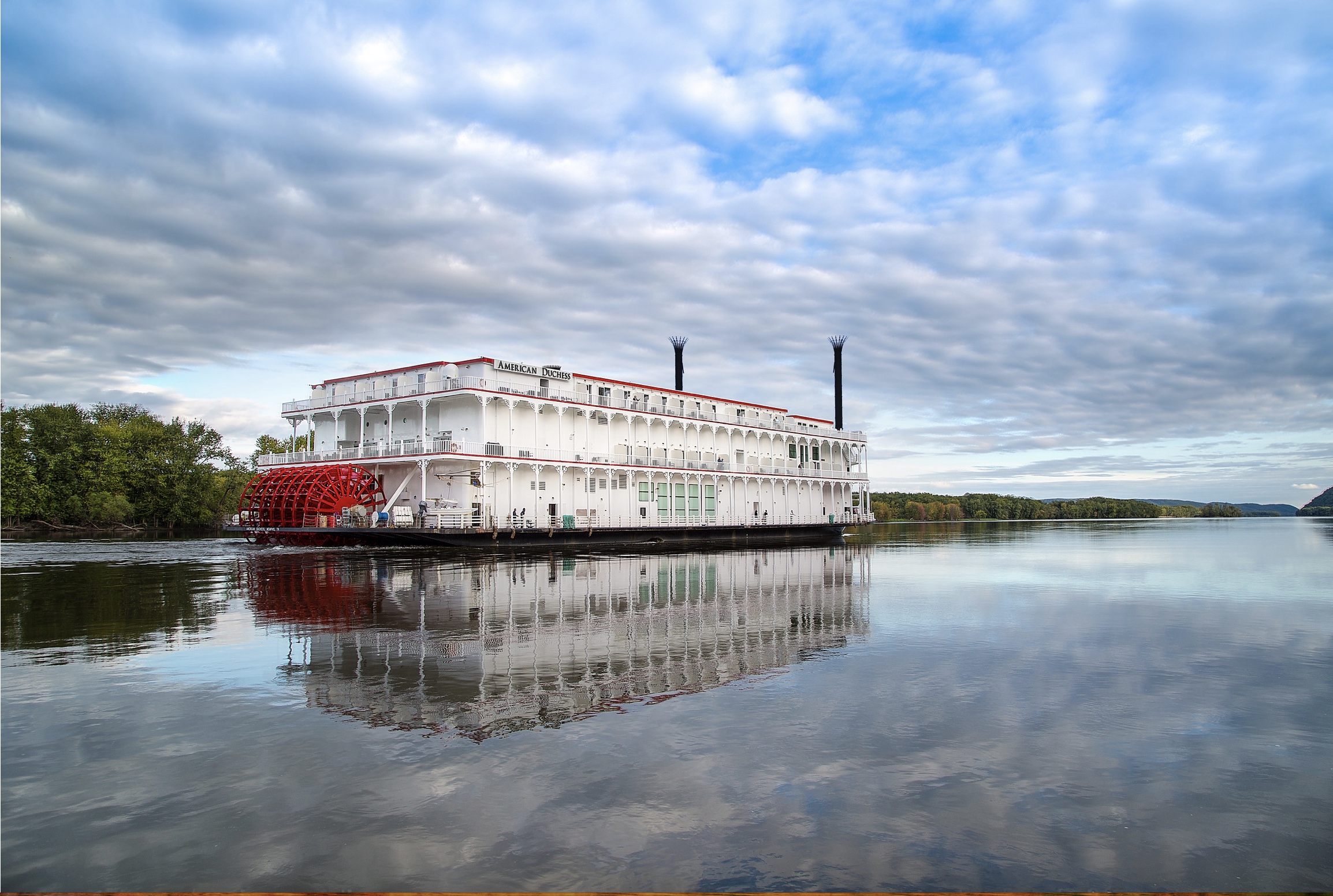Floodwaters detour but can’t dampen fun on steamboat cruise
If you’re thinking about a steamboat river cruise, I suggest doing it when the river isn’t at flood stage. A large river boat will float well enough in high water, but if it has tall stacks to dispose of engine fumes (and most do) the craft will not fit under many bridges.
I discovered this on a week-long cruise from Memphis to New Orleans down the Mississippi River swollen from water dumped into it from upstream flooding on the Missouri and other tributaries. Nevertheless we enjoyed a region famed for its food and music.
Our group was composed of my wife Dorothy, myself and six other members of our church—Bob and Patsy Scott, Joe and Dorothy Dunbar, and Jerry Harney and Rose Marie Estill.
The first clue that our river cruise would be different was when we left Memphis in a bus instead of a boat. We bumped along the road south toward Greenville, Miss. for 2 1/2 hours and the only water we saw was in the complimentary bottles the tour company gave us.
On a normal Mississippi River, we would have walked the plank onto The American Duchess at Memphis. We were able to leave from Greenville despite high water.
We stayed overnight in Memphis before our bus trip, though, which gave us a chance to stroll down Beale Street, closed to traffic in the evening so that people can roam around and listen to jazz and the blues. That’s where we got our first, but certainly not our last, helping of spicy food swimming with crayfish—or crawfish as they call them in the deep South. Most Kansans know them as crawdads.
They are good no matter how you spell them.
Hop-on and hop-off bus tours began in Greenville and continued through the other ports we visited, including Vicksburg and Natchez, Miss.; Baton Rouge and St. Francisville, La., and finally New Orleans.
The steamboat company provided enough buses at each port to allow passengers to see local sites and board a bus about every half hour before eventually returning to the boat.
You may wonder as I did whether to call one of these river craft a boat or a ship. Jerry and I talked the staff into setting us up with a special visit to the engine room. The man in charge was a 20-year veteran of the U.S. Navy’s Submarine Corps, and he told us that the Duchess is a boat, not a ship. A ship sails oceans and boats sail rivers, he said.
I’ll take the word of anyone who has served 20 years of his life in a submarine.
As steamboats often are, the American Duchess is a paddle-wheel boat. We wondered whether the big wheel on the back actually does anything. It does. It provides about a third of the power required to move the boat.
You need to remember, though, that the Mississippi is a winding river, even folding back on itself in places. Thus, a paddle wheel that pushes straight ahead might get the boat in trouble. So, it has three diesel engines that drive propellers similar to those on other vessels. They swivel so that the boat can be propelled side to side.
This system moves the boat through the water softly. Indeed, it is so smooth and the boat so big that it is often impossible to tell when it is moving without observing the boat’s progress in relation to stationary objects such as trees and buildings on shore.
Typically, the boat was docked during the day so passengers could visit local sites. About 5 p.m., travel began to the next port and continued through the night. About all we could feel was a slight vibration from the engines.
On board, there was something to keep all 166 of us busy: shows in the boat’s auditorium, meals in the Grand Dining Room and a smaller dining room, bars, a library and a snack room where you could use a gourmet coffee machine and soft-serve ice cream machine along with fruit and pastries to nibble on.
Our group had its own table in the Grand Dining Room and the same waitresses every night. The food was equivalent to that of any fine restaurant. The fare included local sea food and Cajun food in addition to beef and lamb dishes. The chefs obviously gave thought to presentation. The food was inviting enough to increase my weight by four pounds.
All eight of us elected to stay over in New Orleans an additional two days and we chose a hotel in the French Quarter because it is colorful and features a lot of good music. It’s difficult to walk more than a block or two without hearing street music of all kinds including rock, blues or jazz. Unfortunately, you also see a lot of homeless people asleep on the street.
On the first day some of us visited the French Market, which reminded me of the markets in Mexico—a lot of trinkets, scarves, hats, toys, billfolds and cheap jewelry. Then there was the Cafe Du Monde.
It’s billed as a cafe, but it serves mostly beignets and coffee. The beignets are rolls that come dusted with powdered sugar (along with the table and often the guests). Jerry and Rose Marie and Dorothy and I took a cab to a Cajun restaurant one evening. It featured mostly fried oysters, shrimp, alligator and a traditional Cajun band. As Mark Twain said of the music of Wagner, “Cajun music is much better than it sounds.”
Joe and I spent a good deal of time learning how to get lost in New Orleans. We found that we’re really good at it.
One of the nicest parts of our stay in New Orleans was the garden at our hotel. It was shaded by beautiful old trees and featured wrought-iron tables and chairs. Like our trip down the river, it was pleasant.
Contact Ted Blankenship at
tblankenship@cox.net












